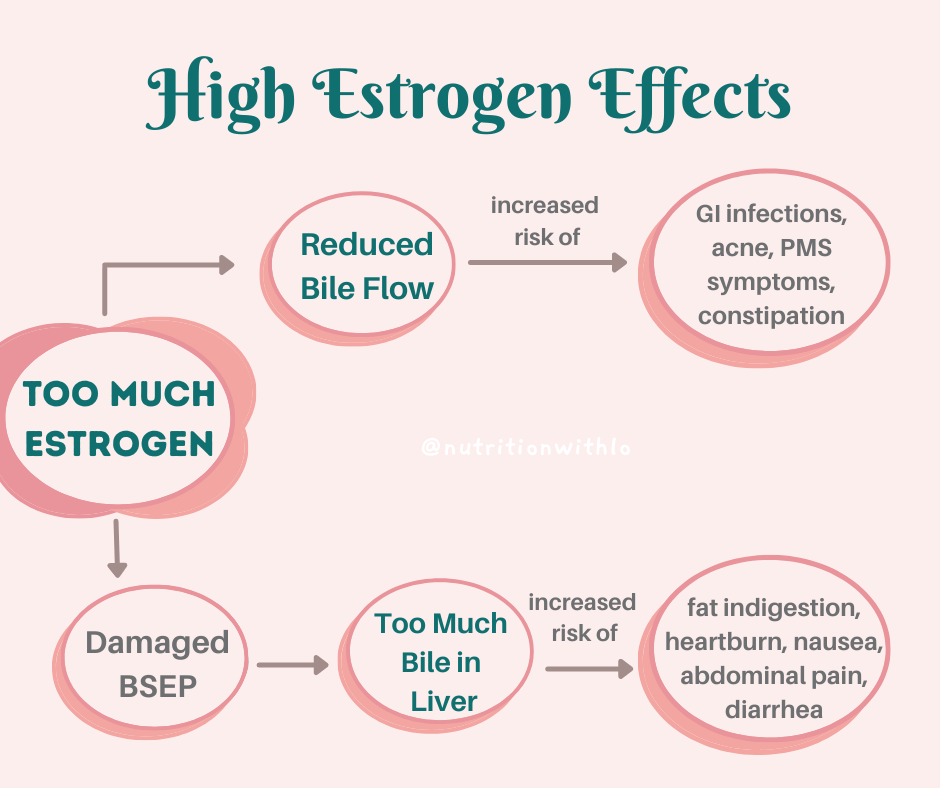What is Bile and What Does it Do?
Bile is a sludge-like substance mostly made of water, bile salts, bilirubin, and fats. Made in the liver, then stored in the gallbladder, bile is released when given the green light by the hormone cholecystokinin (CCK). It goes to the small intestine to aid in digestion by breaking down fats. It also removes excess cholesterol and other wastes from the body along with the transportation and digestion of nutrients. Bilirubin is a hemoglobin waste product which carries blood oxygen and is removed in the stool with the rest of bile. Furthermore, bile plays an important role in antimicrobial activity by killing pathogens in the gastrointestinal (GI) tract, removing toxins from the body, and releasing them through a bowel movement. In other words, it helps prevent bacterial overgrowth and helps you detoxify. Let’s discuss a few ways that bile impacts other systems in the body!

Bile and Vitamin D
Vitamin D is like a parent holding a toddler’s hand while crossing the street. It helps calcium absorb into our body to keep it healthy. Not only that, it also has a positive relationship with estrogen. Low levels of vitamin D have been correlated to low levels of estrogen and vice versa. Low levels of vitamin D AND estrogen may increase the risk for metabolic syndrome or osteoporosis. Bile salts help absorb the fat-soluble vitamins A, D, E, and K. Another of Vitamin D’s many roles is that it helps with bile acid metabolism.
Bile and Hormones
Because hormones control the release of bile, too much estrogen can reduce bile flow. In turn, low bile flow leads to excess estrogen, and the cycle starts again. High levels of estrogen can lead to development of cholesterol gallstones. Gallstone disease and liver disease are just two of the diseases that are caused by excessive estrogen.
To make it simple:
Too much estrogen → too little bile → increased risk of GI infections, acne, PMS symptoms, and constipation
Too much estrogen → damaged bile salt export pump (BSEP) → too much bile inside liver → increased risk of fat indigestion, heartburn, nausea, abdominal pain, and diarrhea

Potential symptoms of high estrogen: bloating, irregular menstrual periods, increased premenstrual syndrome (PMS), mood swings, weight gain, hair loss, headaches, fatigue, memory issues, and breast lumps or tenderness.
It is a delicate, highly regulated system. So, if one thing is overproduced, then the system gets off balanced.
No Gallbladder? No problem (sort of)!
As stated before, bile is stored in the gallbladder after it is released from the liver and as we learned earlier, high amounts of estrogens can cause gallstones. Situations that lead to high estrogen in women include: pregnancy, environmental xenoestrogen exposure, constipation, and polycystic ovary syndrome (PCOS).
More often than not, people who get gallstones may be recommended to have their gallbladder removed. Without a gallbladder, bile does not have a place to be stored so it goes straight from the liver to the small intestine. This can result in unwanted symptoms like flatulence, diarrhea, fatty food intolerance, and abdominal pain.
Supporting Bile Flow
Ginseng and bitter foods like arugula, beets, and dandelion can help support bile production to further assist digestion. Bitter foods aid in digestion by releasing a digestive hormone called gastrin, which stimulates the liver to produce bile, controls digestive functions, and helps absorb nutrients. Physical therapeutic exercises such as diaphragmatic breathing can also induce the production of bile.
If you have a history of gallbladder sludge or stones or high estrogen symptoms, evaluating your hormones could be helpful to improve your digestion. The DUTCH Test Complete package is a comprehensive hormone test to assess your reproductive hormones and includes a review session and custom food, supplement, and lifestyle plan with Lauren. Learn more and purchase HERE.
References
Deng, R. (n.d.). Crosstalk between estrogen and bile acid signaling pathway. Grantome.com. Retrieved December 27, 2021, from https://grantome.com/grant/NIH/R01-DK087755-03
Hofmann, A. F., & Eckmann, L. (2006). How bile acids confer gut mucosal protection against bacteria. Proceedings of the National Academy of Sciences of the United States of America, 103(12), 4333–4334. https://doi.org/10.1073/pnas.0600780103
Jacobs, E. T., Haussler, M. R., Alberts, D. S., Kohler, L. N., Lance, P., Martínez, M. E., Roe, D. J., & Jurutka, P. W. (2016). Association between circulating vitamin D metabolites and fecal bile acid concentrations. Cancer Prevention Research (Philadelphia, Pa.), 9(7), 589–597. https://doi.org/10.1158/1940-6207.CAPR-16-0033
NHS Choices. (2019). Overview – Gallbladder removal. NHS. https://www.nhs.uk/conditions/gallbladder-removal/
Team, T. B. E. (n.d.). 5 Ways to Promote Bile Production to Optimize Nutrition. Blog.bioticsresearch.com. Retrieved December 28, 2021, from https://blog.bioticsresearch.com/5-ways-to-promote-bile-production-to-optimize-nutrition
Comments +